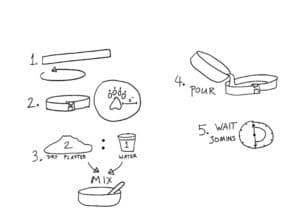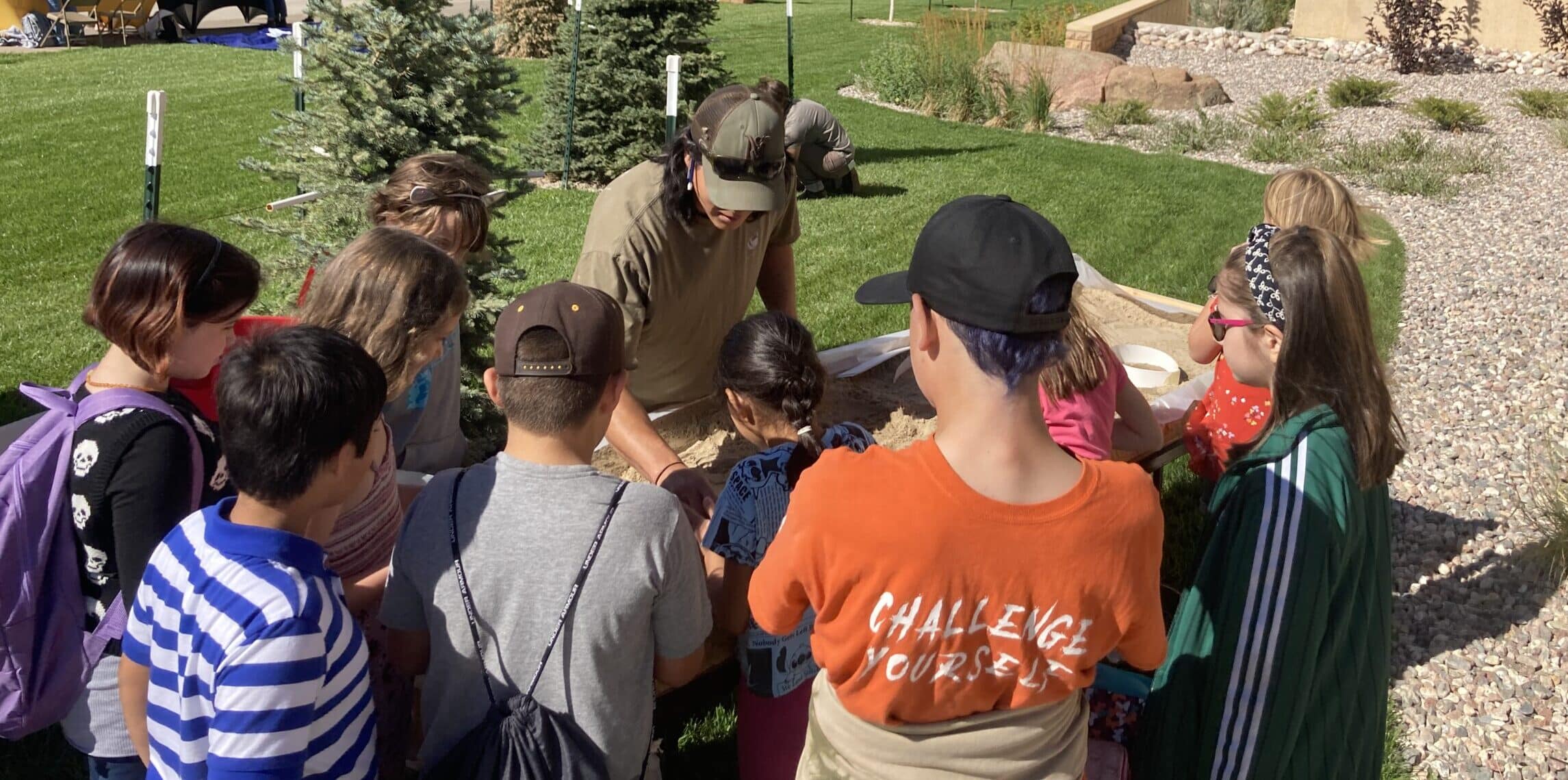As wildlife scientists, we spend a lot of our time looking for animals. Mammals are hard to see most of the time, but they often leave evidence that they were in an area through tracks and sign. We then have to find the clues they’ve left behind and piece together what that animal was doing.
We can make casts of the animal tracks to save and take home with us. This can be helpful if we just want to be reminded of seeing a particular animal, or if we want to build a library of tracks under different conditions. A deer track will look different depending on whether she was walking in snow or running through mud. Casts of the tracks will help us to remember what tracks look like in all sorts of conditions!
These instructions will walk you through the process of making plaster casts of animal tracks. Here’s a printable, PDF version of the guide.
Making casts is a pretty easy process, but it is messy. It’s appropriate for people of all ages, as long as they’re excited about animals!

Materials
Plaster of Paris or dental plaster. Plaster of Paris can be found at most hardware stores.
Water
Mixing container (paper bowls work well!)
Protective gloves (nitrile or latex)
Mixing utensil (plastic spoons or popsicle sticks work well!)
Cardboard or poster board strip to contain plaster once is has been poured
Clothes pin, tape, or paperclip to hold cardboard in place.
A place to be messy!
And of course… TRACKS! You can use real animal tracks or purchase animal tracks online for little cost.
Directions
- Once you have identified the track you would like to cast, cut a strip of cardboard long enough to encircle the track with an inch or so between the edge of the track and cardboard. The strip should be about 5 inches tall.
- Place the tape, clothes pin, or paper clip on the cardboard to hold it at the right size circle, and gently press it into the ground surrounding the track so the plaster does not pour out underneath the edge. BE CAREFUL NOT TO DISTURB THE TRACK!
- Mix 2 parts plaster to 1 part water in your mixing container until it feels like pancake batter.
- GENTLY pour the mixture into the circle of cardboard, letting it seep into the track. Try not to pour it directly into the track as the force of the mixture could distort the track’s detail.
- Wait 30-40 minutes to let the plaster set. It’s done when it appears dull and is hard when you poke it.

